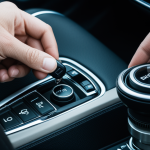Understanding the Importance of Car Paint Protection
Car Paint Protection is more than just an aesthetic concern; it’s fundamental for maintaining the vehicle’s value. A well-maintained exterior with proper paint protection can significantly extend a car’s longevity and preserve its appearance, making it a worthy investment.
Benefits of Waxing play a crucial role in this maintenance journey. Regular waxing creates a protective barrier that shields the paint from harmful environmental factors and UV rays, potentially preventing oxidation and fading. Car Maintenance routines that include waxing ensure the paint’s vivid colour and lustre remain intact over the years.
In parallel : Transforming Your British Classic: The Definitive Guide to Seamlessly Installing a Modern Infotainment System
In the UK, the weather profoundly impacts car paint protection. Acid rain, frequent showers, and road salt during winter months can deteriorate unprotected paint. Therefore, incorporating waxing as part of regular car maintenance is essential for those living in such environments. Waxing not only helps repel water but also prevents road dirt and salt from sticking to the car’s surface.
By understanding and applying essential maintenance practices, you effectively protect your vehicle’s paint, ensuring it remains attractive and functional while sustaining its resale value. Regular attention to these details makes a considerable difference in the long-term aesthetic quality of your car.
Topic to read : The Definitive Guide to Expertly Maintaining Cooling Systems in High-Performance British Cars
Essential Tools and Products for Polishing and Waxing
Polishing and waxing your car requires specific tools and products to achieve optimal results. To begin with, investing in high-quality polishing tools is crucial. A dual-action polisher is a popular choice for its ability to provide consistent pressure and reduce the risk of damaging the paint.
When considering car wax products, pay attention to the unique UK conditions, such as rain and varying temperatures. Some recommended brands include Meguiar’s, Autoglym, and Turtle Wax. These brands offer reliable durability and protection against environmental factors.
Hardware is just one side of the coin; selecting the right materials is equally important. Opt for microfiber cloths to ensure a scratch-free surface when applying polish or wax. They help in spreading product evenly and effectively, enhancing the shine.
To safeguard your car’s paintwork from potential damage, always use clean applicators and follow the manufacturer’s guidelines. It’s essential to apply products in a shaded area to prevent premature drying, which can hinder the effectiveness of your efforts. Finally, maintaining a clean workspace free of contaminants will prevent unwanted scratches during the process. This ensures the aesthetic integrity and resilience of your vehicle’s paint.
Common Mistakes and How to Avoid Them
Navigating the world of car detailing is no small feat, and avoiding common pitfalls is essential for preserving your car’s shine and longevity. Many enthusiasts fall into the trap of misunderstanding wax and polish. Wax does not polish; it seals and protects, while polish removes imperfections. Knowing this difference is critical to successful car detailing.
Environmental considerations play a pivotal role during the detailing process. Avoid applying wax or polish in direct sunlight; the heat causes these substances to dry too quickly, reducing their effectiveness and potentially leading to streaks or a dull finish. Instead, choose a shaded area or perform these tasks in the cooler parts of the day to achieve more uniform results.
Preventing damage also involves recognising polishing pitfalls. Over-polishing can strip the paint’s protective layers, leading to thinning. Use polish sparingly and according to the manufacturer’s guidance. Investing time in correctly choosing and using car detailing products especially suited for UK weather conditions will ensure robust protection against environmental aggressors. These practices not only safeguard your vehicle’s paint but also maintain its aesthetic appeal. Remember, the right approach to waxing and polishing will prolong the allure of your car.
The Art of Waxing Your Car
Waxing is a critical aspect of car maintenance, protecting the paint and enhancing its appearance.
Choosing the Right Wax
Selecting the ideal wax depends on several factors, including UK weather conditions. Synthetic waxes are praised for their durability and are suitable for the UK’s variable climate. They offer extended protection, whereas natural waxes, like carnauba, provide superior depth and shine but require more frequent applications.
Proper Application Methods
Waxing techniques significantly affect the outcome. For even application, always follow a straight path rather than a circular motion. This method helps avoid common errors such as swirl marks and streaks, maintaining a smooth and even layer. When applying wax, use a soft cloth or foam applicator and follow the product’s instructions diligently.
Maximizing Wax Durability
To prolong the effectiveness of wax, consider applying it every 6-8 weeks, particularly in harsher UK climates. Store wax and applicators in a cool, dry place to maintain their quality. This routine will ensure the vehicle’s paint remains protected and vibrant over time, enhancing both appearance and resale value. Aim to conduct these waxing sessions in a cool, shaded area to allow the wax to bond effectively without premature drying.
Step-by-Step Guide to Polishing Your Car
Polishing your car meticulously can enhance its appearance and protect its paintwork. Enter the world of polishing techniques with confidence by following a step-by-step approach that pays attention to car detailing details and helps in paint correction.
Preparing the Vehicle
Start by thoroughly cleaning and decontaminating your car’s surface to remove dirt and debris. Use a clay bar to ensure the paint is smooth to the touch. Then, carefully inspect the surface for scratches and imperfections that require attention. This initial assessment is crucial for effective polishing.
Application Techniques
Decide between using a dual-action polisher or opting for hand polishing based on your expertise and comfort level. For UK vehicles, use polishing compounds that combat specific weather-related paint issues, like rain spots. Dual-action polishers provide a consistent finish, reducing the risk of creating further imperfections.
Finishing Touches
After polishing, perform a final inspection to ensure every area has been adequately treated. Clean away any residual compounds. To maintain the newly polished surface, it’s vital to use products that offer lasting protection against UK weather conditions. Regular maintenance will uphold the freshly polished look and prevent the recurrence of imperfections.
Advanced Techniques for Car Detailing
Diving into professional detailing can elevate your car’s finish significantly. Advanced techniques often involve machine waxing, which allows for a more uniform layer of wax application compared to manual methods. This process not only ensures superior protection but also enhances the vehicle’s gloss and overall appearance by providing a more thorough seal.
When dealing with deep scratches, traditional methods may not suffice. Advanced paint correction techniques are essential to effectively diminish severe imperfections. These techniques usually involve multiple stages of abrasives to gradually level the paint, restoring its pristine state. Employing a rotary polisher can aid in tackling deeper scratches, especially in the UK’s demanding weather conditions.
Enhancing gloss and shine through layering is another popular tactic. By applying multiple thin layers of product, you can build depth and richness in the paint’s appearance. Each layer augments the reflectivity and vibrancy, provided you allow sufficient curing time and apply in conducive conditions – ideally away from direct sunlight. This strategic layering, combined with routine car maintenance, ensures that the vehicle remains eye-catching and well-protected over time, making it a worthy effort for those who cherish their car’s aesthetic appeal.
FAQ on Car Polishing and Waxing
Navigating the labyrinth of car care FAQs can be challenging. Here, we address common queries to enhance understanding and ease decision-making for car enthusiasts.
How often should I wax my car? As a rule of thumb, waxing every 6-8 weeks is beneficial, especially under the UK’s varying conditions. This frequency maintains the protective layer against environmental factors and keeps your car gleaming.
What type of wax is most effective? For durability, synthetic waxes are unrivaled, especially in the UK’s unpredictable weather. Meanwhile, natural waxes like carnauba offer a superior sheen but may require more frequent application.
How do I choose the right polish for my car? Consider polishing compounds tailored for UK-specific issues, such as rain-induced water spots. Ensure compatibility with your vehicle’s paint type—consult manufacturer recommendations for best results.
Can I wax my car too often? Over-waxing is seldom an issue; it mainly wastes product. Monitor the paint’s condition and reapply if water no longer beads on the surface.
Can I polish without scratching my car? Yes, use polishing techniques like dual-action machines for a scratch-free finish. Always employ microfiber cloths and follow product guidelines.





